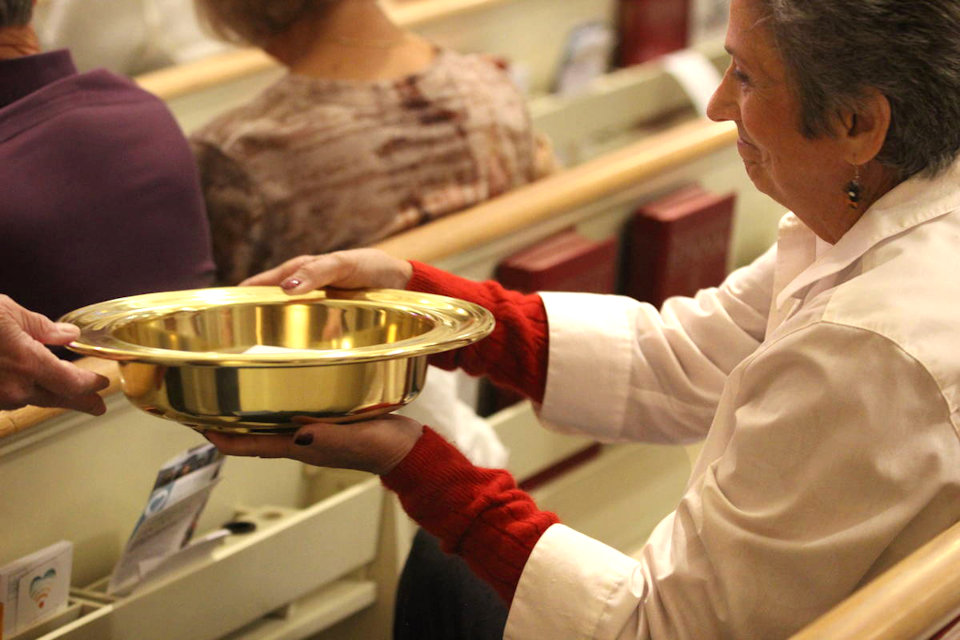Financial forecast … a survey of conferences projects that a 20% decline in local church net expenditures will result in about $41 million less in requested apportionments by 2024.
HEATHER HAHN
UM News
Over the past year, United Methodist financial leaders have faced the conundrum of trying to figure out what a potential church split means for the denomination’s bottom line.
General Conference, the denomination’s top lawmaking assembly, faces multiple proposals to resolve the church’s longtime debate over LGBTQ inclusion by splitting the denomination. The big question mark: how many congregations will leave the denomination if General Conference approves a formal separation?
While there is still no definitive answer, the General Council on Finance and Administration board got an idea of where to begin its calculations during its Nov. 19 online meeting.
Based on a survey of the 54 U.S. conferences, the finance agency now estimates the denomination stands to lose about 20% of U.S. local church net expenditures between 2021 and 2024. Forty-seven conferences responded to the agency’s survey.
The survey results do not mean conferences are forecasting that 20% of U.S. United Methodist churches will depart or close during the next four years. Net expenditures can vary widely by congregation.
What the results do mean is that the agency expects church departures and closures to result in a 20% decline in one of the key factors in determining the budget for denomination-wide ministries.
GCFA requests apportionments — shares of church giving — from each U.S. conference based on a formula that includes its local church spending, local church costs, the conference’s economic strength, and a base percentage approved by the General Conference.
The agency board is asking the coming General Conference to drop the economic-strength part of the formula and substantially reduce the base percentage.
That still leaves church net expenditures as an important factor in determining apportionments. GCFA defines net expenditures as what a church spends after capital expenses, apportionments, and benevolent giving.
The agency multiplies a conference’s total local church net expenditures by the General Conference-approved base percentage to determine that conference’s general apportionments.
At this point, GCFA is projecting that a 20% decline in net expenditures will result in about $41 million less in requested apportionments by 2024.
Because local-church spending varies from year to year, GCFA always uses data from earlier years. For example, the agency calculated the apportionments requested in 2020 using local-church expenditures from 2017.
“For churches that we know have left at the end of the year, we would take them out of the equation for the apportionments for the following year,” Rick King, the agency’s chief financial officer, told the board.
“So at the end of 2021, any churches that have left will be deducted from the apportionments for 2022.”
The giving in the U.S. also helps determine the apportionments GCFA requests from central conferences, church regions in Europe, Africa, and the Philippines. U.S. apportionments provide 99% of the funding for denomination-wide ministries such as general agencies and bishops.
Planning for the next four-year budget remains ongoing. The COVID-19 pandemic resulted in the postponement of the General Conference from May this year to Aug. 29-Sept. 7, 2021. The GCFA board plans to take up budget adjustments at least twice before the postponed General Conference.
For the time being, the board unanimously approved 2021 spending plans for agencies and other ministries supported by general-church apportionments.
Almost all are based on a 50% apportionment collection rate — not only because of expected church departures but also because of the still-untold toll of the COVID-19 pandemic.
“This is a plan that in a year of uncertainty is meant to be conservative because we don’t know what is going to happen,” King told the board.
GCFA recommended that agencies and other ministries use the dramatically reduced collection rates in developing their spending plans.
Still, the Rev. Moses Kumar, the agency’s top executive, emphasized that the agencies’ spending plans had already won their respective boards’ approval before the Nov. 19 meeting.
“We didn’t choose it for them,” Kumar said. “We recommended it.”
King said that if more money comes in, the additional funds will be distributed to ministries by the proportions determined by General Conference.
“GCFA’s real responsibility here is to make sure agencies do not spend money they don’t have,” King said.
The Rev. Steve Court, GCFA board member from the East Ohio Conference, said he prayerfully accepted the process but urged his fellow board members to keep in mind that the reduced budgets would mean “significant” staff reductions.
“Most of agency costs relate to staffing,” Court said. “I am aware that this is a 2021 plan, not a 2020 plan, so we have a year for the implementation to take place.”
Ministries across the denomination are already facing financial strain.
As of the end of October, U.S. apportionment receipts were down $11.6 million compared with the same time last year. At this point, GCFA is projecting a 70% collection rate for 2020 — significantly lower than during the worst of the 2008-2010 global recession.
“We have two things colliding at the same time,” said North Texas Conference Bishop Michael McKee, the GCFA board president. “We still don’t know the financial impact of the pandemic and whatever happens next year at General Conference.”
Last Updated on October 31, 2023

